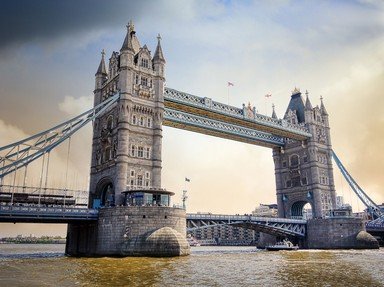Quiz Answer Key and Fun Facts
1. The source of the River Lea is located close to the town of Luton in which English county?
2. In Hertfordshire, some of the River Lea's water is diverted away to form the New River - an artificial waterway constructed in 1613 for what purpose?
3. Which other river, canalised in the mid-18th century, flows into the River Lea near the town of Hoddesdon?
4. Thanks to a series of historic canalisation works, the River Lea is navigable as far north as the city of Hertford. What name is generally used to refer to the navigable portion of the waterway?
5. The River Lea flows past which major London sporting venue?
6. Lee Valley Park is a slice of green space in an otherwise heavily built-up region, but it hasn't always been such an attractive destination. In which decade of the 20th century did work begin to transform the area from derelict wasteland to nature reserves, gardens and riverside walks?
7. Which of these reservoirs that supply drinking water to London is part of the Lee Valley Reservoir Chain?
8. Which of these is NOT an area of wetland or former wetland fed by the River Lea?
9. Leamouth, the area of land to the west of the River Lea's junction with the River Thames, falls within which London borough that also includes the Isle of Dogs and Canary Wharf?
10. What is the name given to the final stretch of the River Lea, which connects to the River Thames in East London?
Source: Author
Fifiona81
This quiz was reviewed by FunTrivia editor
agony before going online.
Any errors found in FunTrivia content are routinely corrected through our feedback system.

